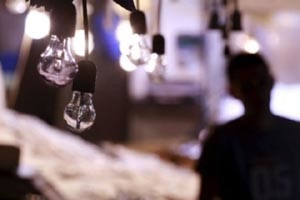Along with eating right and exercising, people should consider adding another healthy habit to their list: turning out the lights. That’s according to a new study showing many negative health consequences for mice kept under conditions of constant light for a period of months.
“Our study shows that the environmental light-dark cycle is important for health,” says Johanna Meijer of Leiden. “We showed that the absence of environmental rhythms leads to severe disruption of a wide variety of health parameters.”
Those parameters included pro-inflammatory activation of the immune system, muscle loss, and early signs of osteoporosis. The researchers say that the observed physiological changes were all indicative of “frailty” as is typically seen in people or animals as they age. But there was some more encouraging news, too.
“The good news is that we subsequently showed that these negative effects on health are reversible when the environmental light-dark cycle is restored,” Meijer says.
To investigate the relationship between a loss of the light-dark cycle and disease, Meijer and colleagues, including Eliane Lucassen, exposed mice to light around the clock for 24 weeks and measured several major health parameters. Studies of the animals’ brain activity showed that the constant light exposure reduced the normal rhythmic patterns in the brain’s central circadian pacemaker of the supra chiasmatic nuclei (SCN) by 70 percent.
Strikingly, the disruption to normal light and dark patterns and the circadian rhythm led to a reduction in the animals’ skeletal muscle function as measured in standard tests of strength. Their bones showed signs of deterioration, and the animals entered a pro-inflammatory state normally observed only in the presence of pathogens or other harmful stimuli. After the mice were returned to a standard light-dark cycle for 2 weeks, the SCN neurons rapidly recovered their normal rhythm, and the animals’ health problems were reversed.
The findings suggest that more care should be taken in considering the amount of light exposure people get, particularly those who are aging or otherwise vulnerable. That’s important given that 75 percent of the world’s population is exposed to light during the night. Constant light exposure is very common in nursing homes and intensive care units, and many people also work into the night.
“We used to think of light and darkness as harmless or neutral stimuli with respect to health,” Meijer says. “We now realize this is not the case based on accumulating studies from laboratories all over the world, all pointing in the same direction. Possibly this is not surprising as life evolved under the constant pressure of the light-dark cycle. We seem to be optimized to live under these cycles, and the other side of the coin is that we are now affected by a lack of such cycles.”
The bottom line, according to the researchers is “light exposure matters.”
They say they now plan to perform more in-depth analysis of the influence of distorted light-dark cycles on the immune system. They’d also like to investigate possible health benefits to patients exposed to more normal conditions of light and dark.
Source: Science daily
N.H.Kh

